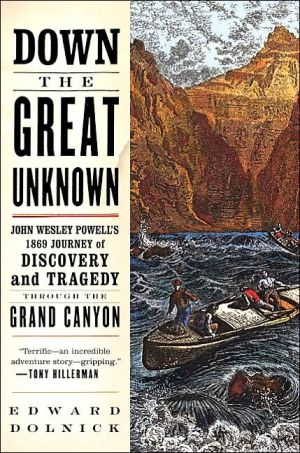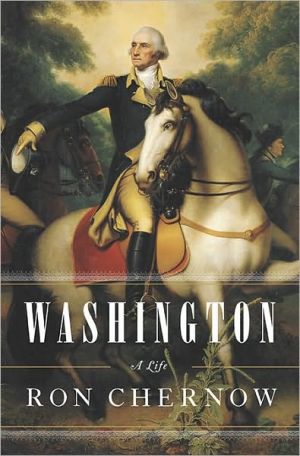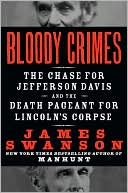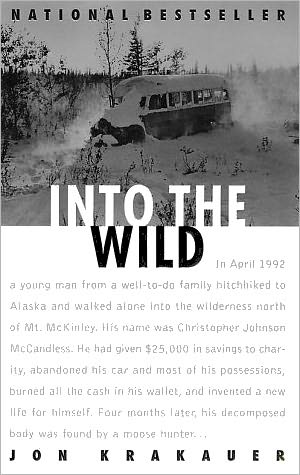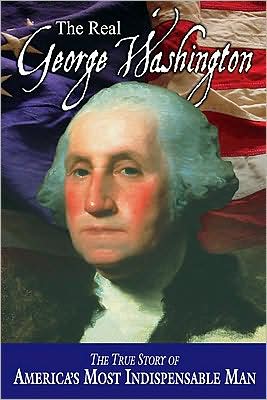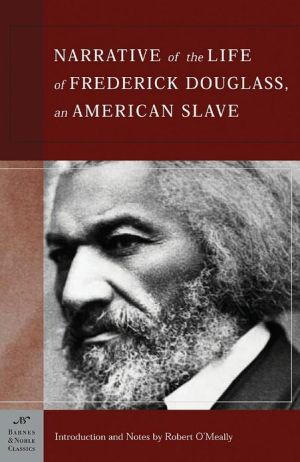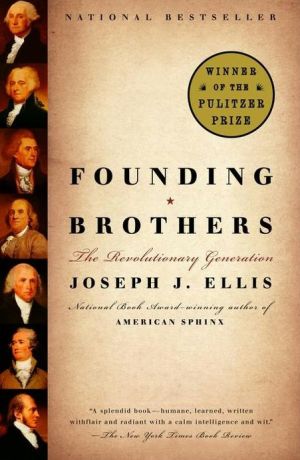Down the Great Unknown: John Wesley Powell's 1869 Journey of Discovery and Tragedy through the Grand Canyon
0n May 24, 1869, a one-armed Civil War veteran named John Wesley Powell and a ragtag band of nine mountain men embarked on the last great quest in the American West. No one had ever explored the fabled Grand Canyon; to adventurers of that era it was a region almost as mysterious as Atlantis — and as perilous.\ The ten men set out down the mighty Colorado River in wooden rowboats. Six survived. Drawing on rarely examined diaries and journals, Down the Great Unknown is the first book to tell...
Search in google:
E-book exclusive special feature: No more flipping pages! This PerfectBound e-book contains in-text hyperlinks to key author notes. On May 24, 1869 a one-armed Civil War veteran named John Wesley Powell and a ragtag band of mine mountain men embarked on the last great quest in the American West. Publishers Weekly Powell led his band of stalwart trappers and ex-soldiers down the Green River in Wyoming Territory, heading for the last bit of terra incognita in the U.S.: the Colorado River and the Grand Canyon. The expedition had plenty of supplies, but the wrong type of boats for shooting rapids. Moreover, their inexperience with rapids cost them one of the boats and many provisions. There was little game to supplement their rapidly dwindling food supply. And being the first to chart the river, they didn't know what lay beyond each twist. These handicaps, along with deadly river rocks, soaring canyon walls and one-armed Powell's impressive feat of scaling them to measure their height, make for a remarkable journey. Unfortunately, Dolnick does the story a disservice in overwriting the expedition's slower moments. He frequently overexplains, and he never meets a simile he doesn't like. Every description, no matter how effective, is carried too far, suggesting Dolnick doesn't trust his story or his readers: "rapids... do not murmur. They rumble. They roar. They crash. The sound evokes a thunderstorm just overhead, a jet skimming the ground, a runaway train.... The message is worse than the sound itself the roar of a rapid is a proclamation of danger as clear as a giant's bellowed curse in a fairy tale." After passages like that, readers may want to jump ship, or like Powell's band, they can struggle through and emerge battered but illuminated. Photos and illus. (Oct. 2) Forecast: Will a 15-city NPR campaign, six-city author tour and big-time advertising help the story trump the writing? Yes. The adventure is that good. Copyright 2001 Cahners Business Information.
Chapter One\ The Challenge\ Noon, May 24, 1869\ The few inhabitants of Green River Station, Wyoming Territory, gather at the river front to cheer off a rowdy bunch of adventurers. Ten hardy men in four wooden boats had spent the morning checking their gear and their provisions one last time -- bacon, flour, coffee, spare oars, sextants and barometers (their leader, the skinny, one-armed man in the Emma Dean, fancied himself a scientist). Their plan could hardly be simpler. They will follow the Green River downstream until it merges with the Grand to become the Colorado, and then they will stay with the Colorado wherever it takes them. They intend in particular to run the river through the fabled chasm variously called Big Canyon or Great Canyon or Grand Canyon, a region scarcely better known than Atlantis. No one has ever done it.\ The men hope to make their fortunes; their leader plans to emblazon his name across the heavens. They are brave, they have new boats and supplies to last ten months, they are at home in the outdoors. Most important, they are ready to risk their lives.\ At one o'clock, the Emma Dean, the Kitty Clyde's Sister, the Maid of the Ca–on, and the No Name push themselves out into the current. A small American flag mounted on the Emma Dean flaps proudly in the breeze. Most of the crew are still a bit bleary-eyed. As a farewell to civilization, they have done their best to drink Green River Station's only saloon dry. Now they are suffering what one of them describes as "foggy ideas and snarly hair." The small crowd gives a cheer, the leader doffs his hat, and the four boats disappear around the river's first bend.\ John Wesley Powell, the trip leader, was a Civil War veteran who had lost his right arm at Shiloh. Thirty-five years old and unknown, Powell was a tenderfoot who barely knew the West, a geology professor at a no-name college, an amateur explorer with so little clout that he had ended up reaching into his own (nearly empty) pocket to finance this makeshift expedition. His appearance was as unimpressive as his résumé -- at 5 feet, 61/2 inches and 120 pounds, he was small and scrawny even by the standards of the age, a stick of beef jerky adorned with whiskers.\ To Powell, a natural leader, all that was unimportant. Overflowing with energy and ambition, he was a man of almost pathological optimism. With a goal in mind, he was impossible to discourage.\ He had devised an extraordinary goal. In 1803, with the full and enthusiastic backing of the president of the United States, Lewis and Clark had opened the door to the American West. In 1869, with almost no government support, John Wesley Powell intended to resolve its last great mystery. By this time, the map of the United States had long since been filled in. For two centuries, Boston had been a center of learning and culture. New York and Philadelphia were booming, Nashville and New Orleans struggling to recover from the Civil War. California's gold rush was almost a generation in the past. In May 1869, the pounding of a ceremonial spike at Promontory Summit, Utah, marked the completion of the transcontinental railroad.\ The Rockies and the Sierra Nevada and Yosemite and Death Valley were old news. Miners in search of gold, trappers in quest of beavers whose pelts could be transformed into hats for London dandies, a host of government and railroad surveying parties, all had criss crossed one another's steps in even the most isolated spots of the American continent.\ Except one. One mystery remained. In the American Southwest an immense area -- an area as large as any state in the Union, as large as any country in Europe -- remained blank. Here mapmakers abandoned the careful notations that applied elsewhere and wrote simply "unexplored." Venture some Westerners knew that the region was desolate and bone-dry; they knew the Colorado River ran through it; they knew that canyons cleaved the ground like gouges cut by a titanic axe. Beyond that, rumor would have to do. Men whispered tales of waterfalls that dwarfed Niagara and of places where the mighty Colorado vanished underground like an enormous snake suddenly slithering down a hole.\ Powell aimed to fill in that blank in the map. His plan, such as it was, took audacity to the brink of lunacy. Once they were well under way, he and his men would have no supplies other than those they could carry. They had no reliable maps -- none existed -- and their route stretched across a thousand miles of high desert. It was Indian territory, and peace had yet to break out. There were no white settlements (or settlers, for that matter) anywhere along their river route nor within a hundred miles on either side.\ The Grand Canyon itself, Powell knew, was many hundreds of miles, downstream. It was the final canyon the expedition would pass through -- and the longest and the deepest and the least known -- but they would have to confront countless obstacles before they ever drew near it. The first three-fourths of the route, Powell guessed, led through a series of virtually unexplored canyons. The last one-fourth, if he and the crew were still alive, would be the Grand Canyon.\ Powell's friends feared he was throwing his life away. On May 24, the day he set out, his hometown newspaper had reported on his plans. "It would be impossible for a boat constructed of any known material, upon any conceivable plan, to live through the canyon," one supposed expert declared. "We do not know what kind of boats Professor Powell purposes to descend the Grand Canyon," the newspaper cautioned, "but we greatly fear that the attempt to navigate by any means whatever will result fatally to those who undertake it."
Chapter 1The Challenge1Chapter 2The Crew9Chapter 3The Launch23Chapter 4Ashley Falls37Chapter 5Paradise53Chapter 6Disaster57Chapter 7Shiloh69Chapter 8The Hornets' Nest79Chapter 9Hell's Half Mile91Chapter 10Fire105Chapter 11The First Milestone115Chapter 12Hoax127Chapter 13Last Taste of Civilization137Chapter 14Trapped147Chapter 15"Hurra! Hurra! Hurra!"159Chapter 16Outmatched169Chapter 17Flash Flood181Chapter 18To the Taj Mahal193Chapter 19Grand Canyon205Chapter 20Time's Abyss215Chapter 21The Great Unknown227Chapter 22Sockdolager239Chapter 23Fight251Chapter 24Misery259Chapter 25Separation Rapid267Chapter 26Deliverance275Chapter 27The Vanishing279Epilogue287Notes293Bibliography341Acknowledgments353Index355
\ From Barnes & NobleThe Barnes & Noble Review from Discover Great New Writers\ We dare you to read this book and not find yourself reaching over the arm of your chair for an oar while you're at it! An absolutely breathtaking description of the one-armed Civil War veteran John Wesley Powell, his ragtag group of mountain men, and their journey down the Grand Canyon in the 19th century, Edward Dolnick's story is a gripping adventure tale. \ The men's plan was a simple one: to explore and make a geological study of the last great mysterious expanse of the American Southwest -- that portion of the map, stretching through the Wyoming, Utah, and Arizona territories -- that was still simply marked "unexplored." Beginning in four wooden rowboats at Green River Station, Wyoming Territory, Powell and his men followed the Green River south to where it joined the Grand River; the two rivers combined to form the mighty Colorado River, on which they would ride to the infinitely alluring Grand Canyon.\ It would be impossible to overstate the degree to which Powell's plan was an awe-inspiring leap of faith. He had no way of knowing what perils the unmapped rivers might hold -- 99 days later, six half-starved wretches in just two boats came ashore near Callville, Arizona. A true epic adventure, Down the Great Unknown is as much a tale of human spirit and endurance as it is a thrilling journey back to an extraordinary time in America's history, when geologists first began to question the literal interpretation of Genesis, because "to study the age of rocks was to question the Rock of Ages." (Winter 2002 Selection)\ \ \ \ \ \ Harper’s Magazine“Edward Dolnick’s Down the Great Unknown is both good history and a successful adventure yarn.”\ \ \ Harper's Magazine"Edward Dolnick’s Down the Great Unknown is both good history and a successful adventure yarn."\ \ \ \ \ Publishers WeeklyPowell led his band of stalwart trappers and ex-soldiers down the Green River in Wyoming Territory, heading for the last bit of terra incognita in the U.S.: the Colorado River and the Grand Canyon. The expedition had plenty of supplies, but the wrong type of boats for shooting rapids. Moreover, their inexperience with rapids cost them one of the boats and many provisions. There was little game to supplement their rapidly dwindling food supply. And being the first to chart the river, they didn't know what lay beyond each twist. These handicaps, along with deadly river rocks, soaring canyon walls and one-armed Powell's impressive feat of scaling them to measure their height, make for a remarkable journey. Unfortunately, Dolnick does the story a disservice in overwriting the expedition's slower moments. He frequently overexplains, and he never meets a simile he doesn't like. Every description, no matter how effective, is carried too far, suggesting Dolnick doesn't trust his story or his readers: "rapids... do not murmur. They rumble. They roar. They crash. The sound evokes a thunderstorm just overhead, a jet skimming the ground, a runaway train.... The message is worse than the sound itself the roar of a rapid is a proclamation of danger as clear as a giant's bellowed curse in a fairy tale." After passages like that, readers may want to jump ship, or like Powell's band, they can struggle through and emerge battered but illuminated. Photos and illus. (Oct. 2) Forecast: Will a 15-city NPR campaign, six-city author tour and big-time advertising help the story trump the writing? Yes. The adventure is that good. Copyright 2001 Cahners Business Information.\ \ \ \ \ Library JournalOn May 24, 1869, John Wesley Powell and a band of nine volunteer frontiersmen embarked from Green River Station, Wyoming Territory, in four wooden boats. The one-armed Union veteran and geology professor set out to explore the uncharted Green and Colorado rivers and pass through the mysterious Grand Canyon, reaching his destination at the mouth of the Virgin River in Arizona in late August. To research this journey, former Boston Globe science writer Dolnick relied on Powell's river and postexpedition diaries and his crew's journals. These accounts reveal the friction between the overbearing Powell and his independent mountain men, which resulted in defections and the mysterious disappearance of three crew members. Dolnick's study offers excellent descriptions of the riverine obstacles, the inadequacy of the boats employed, the back-breaking tasks of lining and portaging, the constant threat of death from starvation and hostiles, and the wildly speculative press accounts. The author's liberal use of corroborative testimony from contemporary whitewater professionals may, however, prove distracting. Dolnick's concluding chapter shows how Powell's eventual campaign of self-promotion both secured for him a place in history and effectively eclipsed (by design) the amazing contributions of his men. Recommended for Western collections and all libraries. [For a fictional account of Powell's sojourn, see John Vernon's The Last Canyon, p. 144. Ed.] John Carver Edwards, Univ. of Georgia Libs., Athens Copyright 2001 Cahners Business Information.\ \ \ \ \ Kirkus ReviewsA harrowing history of the one-armed Civil War hero's 1869 expedition down the Colorado River that focuses on the dangers involved in the momentous journey rather than on Powell's political views. Dolnick (Madness on the Couch, 1998) animates the perilous adventure in which Powell, a geology fanatic, and nine novices battled relentless rapids in spindly boats that their predecessors consider "the technical equivalent of walnut shells." Drawing on diaries, Dolnick lets the amateur sailors speak for themselves, allowing an array of colorful personalities to emerge. Powell yearned to put the western US on the map and observe the geology of the Colorado River region. After 80 miles, however, the scientific exploration turned into a hair-raising survival test-when rapids smashed one boat to pieces and destroyed a third of the provisions. Spoiling food and the inhospitable conditions of the Great Basin Desert-sandstorms, monsoons, scarcity of game-posed new challenges. Fearful that he would lose another boat, Powell often demanded his less cautious companions line the boats down the side of the rapids, or carry them through the rocks along the shoreline. As Powell's companions tell it, this drudgery was "all bad. . . . We all have horrible scars from our knees downwards to remind us of the days when we made portages." Dolnick uses interviews with contemporary boaters and the Colorado's sanguinary history of tourist accidents to emphasize the alarming odds the ragtag expedition faced. On land, tension between rock-obsessed Powell and his cantankerous crew brewed as Powell wasted days searching for fossils while his men despaired of reaching civilization before they starved. After four membersdecamped, the remaining explorers, with only nine days' worth of musty flour left, miraculously reached their destination and ended the era of western exploration. Written with authority and zeal, this rich narrative is popular history at its best. Author tour\ \
